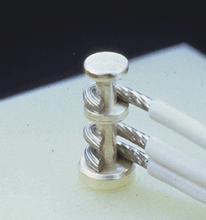I've run across a few 1950s amps that are full of components with leads carefully insulated with bits of tubing, often where it makes no sense, i.e., where leads aren't carrying higher voltages or aren't close together, etc...
So, I'm wondering, what was the thinking, if anyone knows, behind this build technique? Was the idea to protect people in case someone decided to go poking around inside, in which case, they could still touch the tube socket terminals, etc... It seems like a lot of trouble to go to for limited gains, especially in cases where someone was more likely to get zapped by a shorted "death cap" to the chassis ground.
So, I'm wondering, what was the thinking, if anyone knows, behind this build technique? Was the idea to protect people in case someone decided to go poking around inside, in which case, they could still touch the tube socket terminals, etc... It seems like a lot of trouble to go to for limited gains, especially in cases where someone was more likely to get zapped by a shorted "death cap" to the chassis ground.



Comment